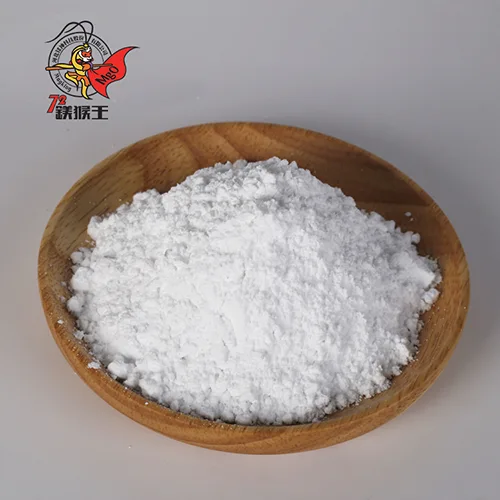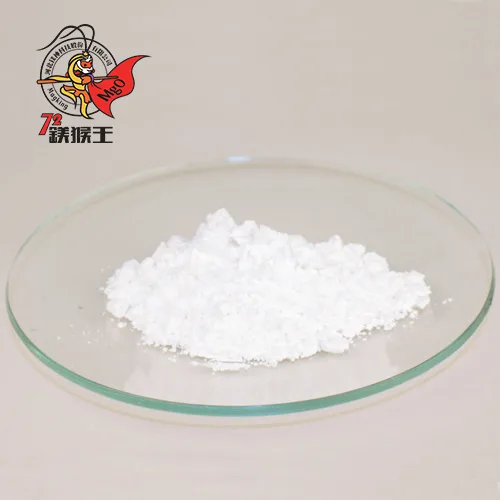Food-grade magnesium oxide (MgO) is a high-purity food additive widely used in the food industry. As a versatile compound, it serves multiple roles, such as an anti-caking agent, pH regulator, filter aid, and nutritional enhancer. Due to its ability to prevent clumping in powdered products, adjust pH levels in food and beverages, and supplement magnesium intake, it plays a crucial role in food processing and nutrition. This article explores the applications, benefits, and safety considerations of food-grade magnesium oxide to provide a comprehensive understanding of its significance in the food industry.
What is Food-Grade Magnesium Oxide?
Food-grade magnesium oxide is a refined form of MgO that meets strict safety and purity standards for use in food processing and nutritional supplements. It is derived from high-quality sources and undergoes rigorous purification to ensure compliance with regulatory standards, such as those set by the U.S. Food and Drug Administration (FDA) and China’s GB standards. Known for its excellent stability, non-toxic nature, and wide range of functionalities, food-grade MgO is an essential ingredient in various food products.
Uses of Magnesium Oxide
Food Additives
Anti-Caking Agent
One of the most common applications of magnesium oxide in the food industry is as an anti-caking agent. It prevents powdered or granulated food products from clumping by absorbing moisture and reducing particle adhesion. This is particularly useful in:
- Seasonings and spice blends
- Milk powder and dairy-based formulas
- Flour and baking powders
By maintaining free-flowing properties, MgO ensures ease of use and enhances the shelf life of powdered foods.
Alkalinity Agents/Acidity Regulators
Magnesium oxide is used to adjust the pH level in food and beverages. Its alkaline properties help neutralize excessive acidity, making it a valuable ingredient in:
- Baking applications, where it regulates the pH of dough
- Dairy products, where it balances acidity
- Beverages, such as sports drinks, to maintain optimal pH levels
This function enhances the stability, taste, and overall quality of food products.
Processing Aids
As a processing aid, MgO improves the efficiency and quality of food production. It is used as a filter aid to clarify beverages, such as beer and fruit juices, by removing impurities and improving transparency. Additionally, it contributes to the texture and consistency of processed foods.
Nutritional Enhancer
Magnesium is an essential mineral necessary for various bodily functions, including nerve function, muscle contraction, and bone health. Food-grade magnesium oxide serves as a magnesium supplement in:
- Nutritional and health products
- Fortified dairy products
- Functional foods and dietary supplements
By incorporating MgO into food products, manufacturers can help consumers meet their daily magnesium intake requirements and prevent magnesium deficiencies.
Special Food Applications
Magnesium oxide is also found in specialized food products that require specific functionalities, such as:
- Sports drinks – Provides magnesium for muscle recovery and electrolyte balance
- Health supplements – Supports metabolism and nervous system function
- Baking ingredients – Helps maintain pH and improve texture in baked goods
Benefits of Magnesium Oxide
Health Benefits
Supplementation of Magnesium
Magnesium is crucial for many physiological functions, including energy metabolism, bone health, and cardiovascular function. Magnesium oxide provides an effective way to supplement this essential mineral, helping to prevent deficiencies that can lead to muscle cramps, fatigue, and neurological issues.
Relieve Constipation
Magnesium oxide is commonly used as a mild laxative to relieve occasional constipation. It works by drawing water into the intestines, promoting bowel movements and aiding digestion. This makes it a beneficial ingredient in certain digestive health supplements.
Processing Advantages
In food production, magnesium oxide offers several processing benefits, including:
- Extending shelf life – Prevents moisture absorption and spoilage in powdered foods
- Improving texture – Enhances the consistency and stability of processed food products
- Enhancing clarity – Used as a filtration aid to produce clear beverages
High Safety
Food-grade magnesium oxide is subject to strict regulatory standards, ensuring its safety for human consumption. Key safety aspects include:
- Compliance with FDA regulations – Meets international food safety standards
- Non-toxic and stable – Safe for use in a wide range of food applications
- Controlled dosage – Ensures safe levels of magnesium intake, preventing excessive consumption
Conclusion
Food-grade magnesium oxide is a valuable ingredient in the food industry, serving multiple functional and nutritional purposes. From preventing caking in powdered foods to supplementing essential magnesium and improving food processing, its versatility makes it indispensable. With proven health benefits, processing advantages, and high safety standards, magnesium oxide continues to be a key component in food production. Manufacturers and consumers alike can benefit from its applications, making it a crucial ingredient for modern food science.
FAQs
1. Is food-grade magnesium oxide safe for consumption?
Yes, food-grade magnesium oxide is safe for consumption when used within regulatory limits. It meets FDA and GB food safety standards and is commonly used in food processing and dietary supplements.
2. How does magnesium oxide help in food processing?
Magnesium oxide improves food processing by preventing caking in powders, regulating pH levels, and acting as a filtration aid to clarify beverages. It also enhances texture and extends the shelf life of food products.
3. Can magnesium oxide be used in beverages?
Yes, magnesium oxide is used in beverages to regulate pH levels and enhance magnesium content. It is commonly found in sports drinks and functional beverages for its health benefits and stabilizing properties.



